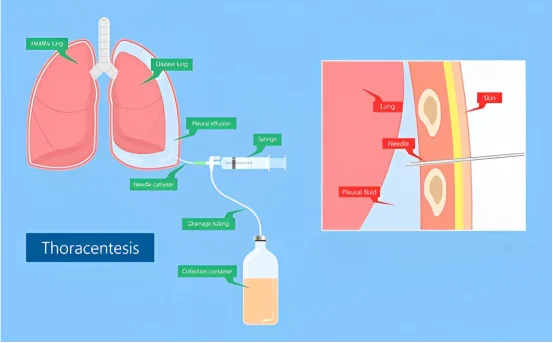Segmentectomy is a lung-sparing surgery that has become a popular treatment in thoracic and lung surgeries for patients with lung cancer at an early stage and other localized lung conditions. Segmentectomy is an invasive procedure that preserves the lung by removing only a portion of it, rather than a whole lobe. This procedure is often used when lung function must be preserved, particularly in older adults and patients with compromised respiratory health.
It is important to understand the symptoms for segmentectomy surgery before undergoing surgery. Understanding these symptoms will help in early diagnosis and prompt medical intervention. It can also lead to better surgical outcomes.
What is Segmentectomy?
Segmentectomy involves the surgical removal of anatomical lung segments. Each lung is divided up into lobes, which are further subdivided to smaller units known as segments. Segmentectomy is different from lobectomy which removes the entire lobe. It only targets the affected or diseased portion.
The procedure is usually performed using a thoracoscopic technique that requires minimally invasive surgery (also called VATS, Video-Assisted Thoracic Surgeon). This allows for a quicker recovery time and fewer complications.
Segmentectomy surgery symptoms
Being aware of the symptoms for segmentectomy surgery can provide patients with critical information regarding their health and treatment options. Segmentectomy is a surgical procedure, but it is usually the last step after a series of diagnostic tests and symptoms. Here are some of the most common symptoms which prompt doctors to recommend segmentectomy.
- Chronic or Persistent Cough:- Chronic coughing that persists for more than 8 weeks can be a sign of lungs-related problems. If the cough doesn’t improve after medication, doctors will use imaging scans to find localized lesions or nodules — possible indicators for segmentectomy.
- Dyspnea (shortness of breath):- Many patients have difficulty breathing during physical activity. If the problem is due to a lung tumor, infection or structural abnormality that affects only a specific lung segment, a segmentectomy may be an effective surgical solution.
- Recurrent Lung Infections:- A red flag can be repeated episodes of pneumonia, bronchitis or a similar condition that affects the same segment of lungs. If antibiotics do not work to eliminate the infection, or if it recurs often, doctors may suggest surgically removing that segment of the lung.
- Chest pain or discomfort:- Unexplained chest discomfort, particularly if it is accompanied by coughing or breathing problems, could indicate a lung problem. Chest pain can be caused by many things, but segmental lung diseases or lung cancer in its early stages are two that warrant further evaluation.
- Hemoptysis is the coughing up of blood.:-The coughing up of blood can be a serious symptom. If the bleeding is confined to one segment of the lung, whether it’s due to a tumor, vascular malformation or infection, segmentectomy can be recommended to remove the affected tissue.
- Imaging of the Lungs Detected Nodules: The nodules may not be visible on a chest X-ray or CT scan, but they can be detected during routine CT scans. Segmentectomy may be performed if the nodules appear suspicious (e.g. growing or with irregular borders).
Why Segmentectomy is Recommended
It is only suggested after a thorough diagnosis and evaluation that segmentectomy is performed. Here are the reasons doctors prefer segmentectomy to other procedures.
- Preserving Lung Function:- If a patient has a compromised lung capacity, such as COPD or another respiratory condition, removing the entire lobe may make breathing problems worse. Segmentectomy allows surgeons only to remove the affected tissue while preserving healthy lung tissues.
- Treatment of Lung Cancer in Early Stages:- The segmentectomy is particularly effective for Stage I Non-Small Cell Lung Cancer. In certain cases, studies show that segmentectomy can offer comparable survival rates as lobectomy. This is especially true when the tumors are small and well-localized (=2cm).
- Localized Infections and Bronchiectasis:- Segmentectomy is used when a lung segment becomes infected chronically or has structural damage. It helps to eliminate the source of infection and prevents it from spreading to other lung regions.
- The Minimally Invasive Alternative:- Modern segmentectomies can be performed with VATS (Video Assisted Thoracic Surgery), or by robotic surgery.
- Postoperative pain is reduced
- Incisions made smaller
- Quicker hospital discharge
- Return to normal daily activities faster
Who is the Ideal Candidate for Segmentectomy Surgery?
Segmentectomy is often recommended for patients who fall into the following categories.
- Small, early stage lung tumors
- You have a poor pulmonary reserve, or you are not fit for lobectomy
- Recurrent localized infections
- Image of isolated lung abnormalities
- Other comorbidities in older adults (heart disease or diabetes, for example)
Before planning surgery, a comprehensive evaluation is required by a pulmonologist, thoracic surgeon, which includes lung function tests and PET scans.
Recovery after Segmentectomy Surgery
The recovery after surgery depends on the overall health of the patient, the extent and type of surgery (minimally invasive or conventional). Recovery includes:
- A hospital stay of 3 to 5 days is recommended (less if minimally invasive surgery is used).
- Breathing exercises for pulmonary rehabilitation
- Pain Management
- Follow-ups with chest imaging and regular follow-ups
In most cases, patients are able to resume their normal activities within a couple of weeks. The long-term outcome is excellent if segmentectomy is performed on early-stage cancers and localized disease.
Conclusion
It is important to recognize the symptoms which may lead to segmentectomy. This can have a major impact on treatment outcomes. Early indicators of segmentectomy conditions include chronic cough, shortness breath or even incidental lung lesions.
Do not ignore persistent respiratory symptoms if you or someone close to you is experiencing them. Do not ignore persistent respiratory symptoms. Seek medical attention, have recommended imaging tests performed, and consult with a specialist in the event that surgery is required.
When performed correctly, segmentectomy surgery can improve lung function and quality of life and save lives, especially when lung cancer is early or the infection is localized.























